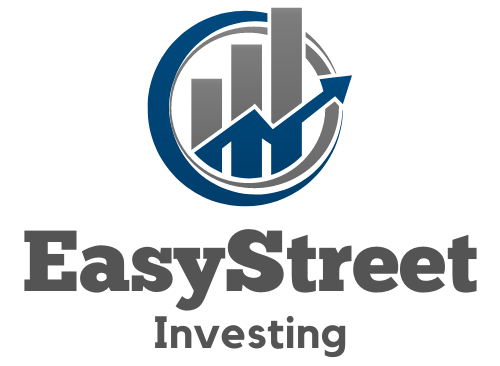Dive deep into the dynamic universe of leveraged loans, where potential gains meet heightened risks. This financial niche, not for the faint-hearted, promises seasoned investors a shot at substantial rewards. You’re about to unravel the intricacies of this high-stakes arena—understanding how these loans work, who taps into them, and the balancing act between lucrative returns and risk management.
Ever wondered what fuels big-time corporate moves or buyouts? It’s often leveraged loans—a powerhouse in the private equity toolbox. As we peel back layers of this complex market, you’ll learn to navigate its waters. We’ll explore credit assessments, interest rate trends, and strategies that keep savvy investors afloat. Get ready to harness knowledge that could transform your investment approach and potentially boost your portfolio’s performance.
Important Highlights
1. Leveraged loans are high-risk, high-reward investment opportunities that cater to investors seeking substantial returns. These loans are typically extended to companies with lower credit ratings, often those rated below investment grade. Because of the elevated risk of default, lenders demand higher interest rates, which can be enticing for investors willing to take on more uncertainty for the possibility of increased income.
2. A defining characteristic of leveraged loans is their floating interest rate structure, usually tied to a benchmark such as the London Interbank Offered Rate (LIBOR) plus an additional spread. This feature can be advantageous during periods of rising interest rates, as it allows investors to potentially benefit from higher yields over time. However, this also means that if interest rates fall, the loan could become less profitable.
3. Diversification is critical when investing in leveraged loans because they are part of a broader high-yield market that includes junk bonds and other speculative-grade debt instruments. By spreading investments across various assets, investors can mitigate some of the risks associated with any single leveraged loan or borrower defaulting.
4. The secondary market for leveraged loans provides liquidity but can also exhibit volatility due to shifts in investor sentiment and broader economic conditions. Active trading in this market allows investors to buy and sell existing loans; however, prices may fluctuate significantly based on perceived credit risk, changes in interest rates, and the overall appetite for risk among market participants.
5. Investors must conduct thorough due diligence before participating in the market for leveraged loans. This involves assessing the creditworthiness of borrowers, understanding loan covenants that offer protections, and staying informed about economic trends that could impact the performance of these loans. As conditions change rapidly within financial markets, staying informed about current developments is crucial for managing investments in this sector effectively.
Defining Leveraged Loans
Leveraged loans are a form of high-risk, high-reward financing primarily used by companies with higher levels of debt. Typically offered to corporations with lower credit ratings, these loans carry higher interest rates due to the increased risk of default. They often fund activities such as mergers and acquisitions, business expansions, or serve as a means to refinance existing debt.
The Mechanics Behind Leveraged Loans
A key aspect of leveraged loans is their floating interest rate structure, which ties the interest rates to a benchmark plus a spread. This can lead to fluctuating payment amounts for borrowers based on current market conditions. Additionally, these loans are usually secured by the assets of the borrower, providing lenders with some level of protection against defaults.
Risks and Rewards in Leveraged Lending
The allure of leveraged loans lies in their potential for higher yields compared to other types of debt instruments. For investors, this means an opportunity for greater returns on their investment. However, the flip side includes increased credit risk and the potential for significant losses if the borrower defaults. Savvy investors must balance these factors when considering leveraged loans.
Understanding Loan Syndication
Leveraged loans are often too large for a single lender to provide the capital alone. As such, loan syndication, where multiple lenders share in funding the loan, becomes necessary. This process not only spreads out the risk but also allows for larger sums to be raised for substantial financial undertakings.
The Role of Collateralized Loan Obligations (CLOs)
Collateralized Loan Obligations (CLOs) play a significant role in the leveraged loan market. These structured financial products bundle together cash-flow generating assets — including leveraged loans — and repackages them into tranches that can be sold to investors. CLOs offer different levels of risk and return, catering to a wide array of investor appetites.
Evaluating Credit Quality and Default Rates
Credit quality assessments and default rates are critical components when dealing with leveraged loans. Investors scrutinize credit ratings, historical performance data, and economic indicators to gauge the likelihood of borrower default. Understanding these elements is vital for making informed investment decisions within this realm.
Navigating Regulatory Landscape
The regulatory environment surrounding leveraged lending has seen changes over time. It’s important for participants in this market to stay abreast with guidelines from governing bodies such as the Federal Reserve. Compliance ensures legality and stability within the leveraged loan space.
Interest Rate Fluctuations Impacting Leveraged Loans
Given their variable-rate nature, leveraged loans are sensitive to changes in benchmark interest rates. An increase can enhance returns for holders of these instruments but simultaneously put pressure on borrowers who may face higher debt servicing costs.
Strategies for Portfolio Diversification Using Leveraged Loans
Diversifying an investment portfolio through inclusion of leveraged loans can potentially boost overall returns while spreading risk across various asset classes. Investors often combine these high-yield instruments with more conservative holdings to achieve a balanced investment approach.
Market Trends Influencing Leveraged Lending Dynamics
Economic cycles and market trends heavily influence the dynamics of leveraged lending. Periods of economic growth may see an uptick in demand for leveraged finance as businesses seek capital for expansion opportunities whereas downturns might tighten credit markets and increase defaults.
Leveraging Expert Financial Advice
Engaging with financial advisors who have expertise in high-yield investments such as leveraged loans can provide valuable insights into navigating this complex market effectively.
The Future Outlook for Leveraged Loan Markets
Predicting future trends within the leveraged loan market involves analyzing current economic conditions, regulatory changes, and global financial events that could influence investor confidence and borrowing costs.
Tips for Prospective Leveraged Loan Investors
- Analyze your risk tolerance before investing in high-yield instruments like leveraged loans.
- Diversify your investment portfolio by including various asset classes alongside leveraged loans.
- Stay updated on economic indicators that affect interest rate fluctuations impacting floating-rate debts.
- Maintain awareness of regulatory frameworks governing leverage lending practices.
- Consider professional advice from seasoned financial experts specializing in high-risk investments.
- Monitor credit ratings and default histories closely when selecting individual leveraged loan opportunities.
- Evaluate how global market trends might impact future performance within the leveraged loan sector.
? How Can You Effectively Manage Risks When Investing in Leveraged Loans?
Frequently Asked Questions
What are leveraged loans?
Leveraged loans are a type of financing provided to companies that already carry a considerable amount of debt or have a lower credit rating. These loans typically carry higher interest rates, reflecting the increased risk lenders take on.
Why do investors choose leveraged loans?
Investors opt for leveraged loans because they offer the potential for higher returns compared to investment-grade debt instruments. The higher interest rates can lead to greater income for those willing to accept the associated risks.
Are leveraged loans secured or unsecured?
Leveraged loans are usually secured by the borrower’s assets, which means if the borrower defaults, lenders have a claim on the collateral. This security feature is one aspect that attracts investors despite the high-risk profile.
How do leveraged loans differ from traditional loans?
The main difference lies in their risk and reward profile. Leveraged loans are riskier due to the borrower’s weaker financial position but offer higher rewards in terms of interest rates. Traditional loans are usually less risky with correspondingly lower returns.
Can individual investors participate in leveraged loan markets?
Yes, individual investors can participate through loan participation mutual funds or exchange-traded funds (ETFs) specializing in leveraged loans. However, it’s important for individuals to understand the risks involved.
What is the role of covenants in leveraged loans?
Covenants are terms set in the loan agreement designed to protect lenders by limiting certain actions of the borrower. They help manage risk by ensuring borrowers maintain specific financial standards.
How does a default impact leveraged loan investors?
In case of a default, leveraged loan investors may face losses; however, since these loans are often secured, they might recover some of their investment through the sale of the collateral.
What factors should be considered before investing in leveraged loans?
Potential investors should assess their risk tolerance, market conditions, interest rate environment, and borrower’s creditworthiness before investing in leveraged loans.
How does economic downturn affect leveraged loan markets?
During an economic downturn, default rates may increase as borrowers struggle financially, impacting returns and increasing risk for investors in leveraged loan markets.
What strategies can investors use to mitigate risks associated with leveraged loans?
Diversifying investments across various sectors and borrowers, understanding covenant protections, and staying informed about market trends can help mitigate some risks associated with leveraged loans.
Closing Insights on Leveraged Loans
This dive into the world of leveraged loans reveals a financial landscape ripe with opportunities for those seeking higher yields. As we’ve uncovered, while these instruments come with their share of risks due to their association with more indebted entities, they still hold allure thanks to their potential for substantial rewards. It’s clear that proper due diligence and an appetite for risk are prerequisites before venturing into this high-stakes domain.
To wrap up, navigating through the complex currents of leveraged lending requires both caution and knowledge. For savvy investors who approach these waters well-prepared and informed, leveraged loans might just unlock paths to lucrative destinations—provided they steer clear of potential storms. Remember: understanding is key when balancing the scales between risk and reward in any investment decision.

